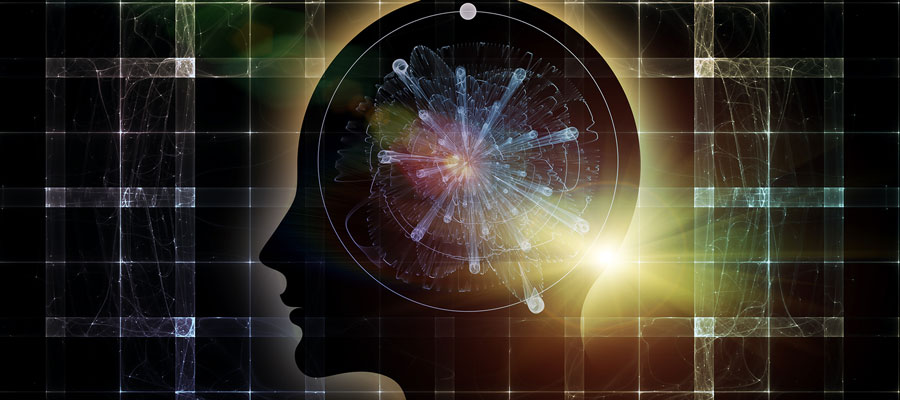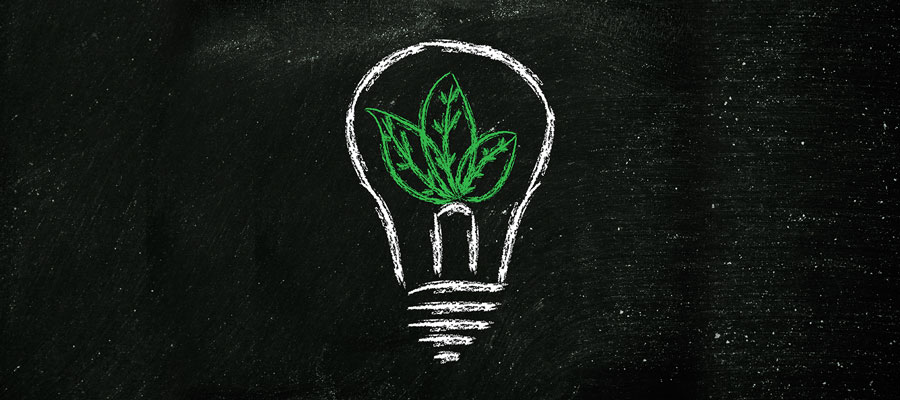- Is Psychiatry Ready for the Psychedelic Healing Paradigm? - March 17, 2017
How can the use of psychedelic and sacred plants help alleviate human suffering? What are the barriers to such “plant medicines,” like ayahuasca, becoming part of mainstream psychiatry? How does one design and conduct research on the therapeutic uses of such plants in a meaningful and ethical way? What would treatment of mental disorders with plant medicines look like? These are some of the primary questions I have been grappling with over the past three years while completing residency training in psychiatry and attempting to launch a career in psychedelic science and healing.
In this short piece, I attempt to sketch out some preliminary answers to the above questions by discussing the challenges of integrating different types of knowledge with the current biological paradigm in psychiatry. I believe that adopting a complex multidimensional perspective of human suffering and tactfully drawing upon different ways of understanding psychedelic plants are key factors for the emerging psychedelic healing paradigm.
Different Perspectives on Psychedelic Plants

Psychoactive plants and fungi have been in relationship with humans for thousands of years,1 playing various roles in society, culture, religion, and medicine over time. As a result of this complex historical relationship, there are numerous different lenses through which we can understand and talk about such plants.2
Taking ayahuasca as an example, an anthropological or indigenous perspective may view the brew as not only sacred, but as a “plant spirit” or “teacher” with which a person or shaman interacts to bring about a desired effect.3 This understanding is in stark contrast to a biomedical view of ayahuasca as a collection of alkaloids and other chemical compounds, primarily a serotonin 2A receptor agonist and MAO inhibitor, which alter brain network connectivity and neuroplasticity.4 Perhaps between these views are psychological perspectives of the brew as a “psychedelic” capable of eliciting non-ordinary states of consciousness that can bring about psychological insight and change.
There are multiple other ways of conceptualizing ayahuasca that continue to evolve as its use becomes more widespread. Spiritual or religious perspectives may classify it as an “entheogen” or “sacrament,” capable of catalyzing profound spiritual or mystical experiences.5 More recent discourses consider ayahuasca as a “cognitive tool”6 or “evolutionary tool” that can enhance creativity and help our species evolve or live more harmoniously. Finally, ayahuasca and other psychedelic plants are often endearingly called “plant medicine” by contemporary users wishing to highlight their profound healing effects.
Plant Medicine in the Era of Biological Psychiatry

While my training in psychiatry has emphasized a “biopsychosocial” approach to diagnosis and treatment,7 it seems clear that the field of psychiatry as a whole has, in recent decades, prioritized biological understandings of mental suffering. In this paradigm, mental illnesses like depression and schizophrenia, as well as addictions, are considered brain diseases resulting from aberrant neural circuitry and chemical imbalances. This view was intended to serve multiple purposes: 1) to help psychiatry take its place among other specialties of medicine grounded in the biological sciences; 2) to destigmatize mental illness and addictions by reframing them as chronic treatable illnesses, much like diabetes or heart disease, rather than as moral failings or resulting from weak character; and 3) as some critical audiences would argue, to help promote pharmaceuticals as the primary means of addressing mental illness and alleviating everyday suffering.8
While not denying that this biological paradigm has led to advances in our understanding of certain mental illnesses and can be a powerful explanatory lens for certain patients, I would like to highlight that a strict biological understanding of mental illness is inconsistent with my understanding of how psychedelic plants function to bring about healing.
The biological paradigm situates the sufferer as a relatively helpless victim of a diseased brain, obscures deeper social, psychological, and spiritual causes of suffering, and prescribes passive adherence to medication as the primary mode of healing. In contrast, I believe that the experience of psychedelic plants powerfully confronts us with the reality that we exist as complex multidimensional beings, with brain-minds, bodies, hearts, and spirits, all of which are connected to each other and to our natural and social environments. In this view, the source of suffering is certainly not just the brain; suffering may arise from disease in any of these layers of existence and can be propagated through them in complex ways. This would explain, for instance, how social stressors become internalized as psychological and often physical symptoms.
The Challenge of Knowledge Integration

A primary therapeutic implication of viewing mental suffering in this multidimensional way is that proper treatments must now be capable of intervening on multiple layers of existence. The primary argument I would like to put forth is that this kind of multidimensional healing a) requires the active engagement of the sufferer (much like in psychotherapy), and b) can be achieved through the use of psychedelic plant medicines by tactfully employing the different conceptual lenses described above. Thus, as a clinician and academic researcher, I view the primary challenge of the emerging field of psychedelic science as integrating previously disconnected and conflicting modes of knowledge and approaches to healing.
Given the dominance of biological frameworks within academic psychiatry, significant challenges to integration manifest when conveying such ideas to colleagues and funding agencies, and when attempting to translate these ideas into clinical trials and treatment protocols. How do we study and utilize a medicine with multiple active ingredients that works in a complex, multidimensional, and idiosyncratic way when modern science is inherently reductionist, looking for single molecules that have specific biological mechanisms of action to explain their therapeutic effects on disease processes that can be seen, known, and measured? How can science account for the interaction between the physical properties of a medicine like ayahuasca and the metaphysical healing components that are complementary to its use, such as music, dieting, praying, and other aspects of shamanism? I believe that overcoming these challenges of integration represents the greatest opportunity for the field of psychedelic science, and if successful, could revolutionize the way we think about and treat mental illness.
Knowledge Integration Past and Present

Fortunately, the process of integrating different types of knowledge about psychedelic plants has already been set in motion. Indigenous peoples around the world hold centuries of knowledge on the use of psychoactive plants for spiritual, religious, and healing purposes. Anthropological and interdisciplinary accounts9 and direct engagement between scientists, practitioners, and indigenous peoples (for example, the World Ayahuasca Conferences) bring stakeholders with different perspectives and types of knowledge into dialogue with one another. In the West, there are “psychedelic” and “psycholytic” models of using psychedelic substances alongside psychotherapy in order treat mood disorders and addictions dating back to the 1950s.10 These models have served as the foundation for recent clinical trials and can be modified and updated as more knowledge is gained and integrated.
The current wave of psychedelic research has been characterized by bringing advanced scientific tools and methods to bear on the study of psychedelic substances, including neuroimaging and molecular pharmacology,11 as well as robust double-blind placebo-controlled clinical trial methodology.12 To the credit of these investigators, this research has not only brought about new understandings of how psychedelics impact the brain but also have begun to elucidate how such biological changes correlate with psychological and spiritual experience. For instance, Robin Carhart-Harris has demonstrated how psychedelic-induced changes in brain connectivity correlate to specific subjective mystical-type experiences.13 Undergoing such mystical-type experiences has been shown to correlate with therapeutic benefit in a number of recent trials with psilocybin, the active ingredient of “magic mushrooms” 14
The study of complementary and alternative medicines has followed a similar trajectory. In recent years, increasingly sophisticated studies have started to shed light on how practices and modalities that used to be understood as spiritual or energetic, like meditation and acupuncture, have biological and psychological effects that contribute to their therapeutic potential.15
Towards “Critical Paradigm Integration”
While these recent developments bode well for the future of psychedelic research and healing, I would like to conclude by arguing for sustained focus among researchers and practitioners in this field on knowledge integration, interdisciplinary collaboration, and multimodal treatment approaches—what I call “critical paradigm integration.”
Current political, economic, and philosophical determinants will continue to pull psychedelic research and treatment in a biological direction. It is thus critical in this early and resurgent time for psychedelic science that researchers aim to integrate different types of knowledge and design treatment protocols that reflect complex multidimensional understandings of how psychoactive plants bring about healing. The latter is crucial because treatment guidelines are generally based on evidence produced by clinical trials. Thus, the models we construct and study now stand to shape how plant medicines will be used in medicine for decades to come.
Will we treat psychedelic plant medicines like any other class of psychopharmaceutical, taken passively by patients while the medicine rewires their brains? Will we seek to create formulations that minimize their psychoactive and somatic or purgative “side effects,” much like has been done with the psychiatric use of ketamine? Or are these treatments of a radically different nature, interacting with our brain-mind-spirit-bodies in a complex fashion that requires active engagement, not only during the time of drug administration, but beforehand and afterwards? I believe that the popular excitement behind psychedelic healing and the profound and long-lasting therapeutic benefits seen thus far in clinical trials argue for the latter. Whether mainstream psychiatry and related social institutions will embrace such a paradigm still remains to be seen.
The author would like to acknowledge the intellectual contributions of Jeffrey Guss M.D., Ryan Wallace M.D., and Alexander Belser M.Phil., in developing the ideas presented here.
>
- El-Seedi, H. R., Smet, P. A. G. M. D., Beck, O., Possnert, G., & Bruhn, J. G. (2005). Prehistoric peyote use: Alkaloid analysis and radiocarbon dating of archaeological specimens of Lophophora from Texas. Journal of Ethnopharmacology, 101(1-3), 238–242 ↩
- Tupper, K. W., & Labate, B. C. (2014). Ayahuasca, psychedelic studies and health sciences: the politics of knowledge and inquiry into an Amazonian plant brew. Current Drug Abuse Reviews, 7, 71–80. ↩
- Luna, L. E. (1984). The concept of plants as teachers among four mestizo shamans of Iquitos, northeastern Peru. Journal of Ethnopharmacology, 11(2):135–56. ↩
- Domínguez-Clavé, E., Soler, J., Elices, M., Pascual, J. C., Álvarez, E., la Fuente Revenga, de, M., … Riba, J. (2016). Ayahuasca: Pharmacology, neuroscience and therapeutic potential. Brain Research Bulletin, 126(Part 1), 89–101. ↩
- Richards, W. A. (2015). Sacred Knowledge. New York City, NY: Columbia University Press. ↩
- Tupper, K. W., & Labate, B. C. (2014). Ayahuasca, psychedelic studies and health sciences: the politics of knowledge and inquiry into an Amazonian plant brew. Current Drug Abuse Reviews, 7, 71–80. ↩
- Engel, G. L. (1980). The clinical application of the biopsychosocial model. Am J Psychiatry, 137(5), 535–544. ↩
- Carlat, D. (2010). Unhinged. New York, NY: Simon and Schuster. ↩
- Labate, B. C., & Cavnar, C. (Ed.s) (2014). Ayahuasca shamanism in the Amazon and beyond. New York City, NY: Oxford University Press. (+) Luna, L. E., & White, S. F. (2016). Ayahuasca Reader. Santa Fe, NM: Synergetic Press. ↩
- Bogenschutz, M. P., & Johnson, M. W. (2016). Classic hallucinogens in the treatment of addictions. Progress in Neuro-Psychopharmacology and Biological Psychiatry, 64, 250–258 ↩
- Carhart-Harris, R. L., Muthukumaraswamy, S., Roseman, L., Kaelen, M., Droog, W., Murphy, K.,. Nutt, D. J. (2016). Neural correlates of the LSD experience revealed by multimodal neuroimaging. Proceedings of the National Academy of Sciences, 201518377–6 (+) Mucke, H. A. M. (2016). From psychiatry to flower power and back again: The amazing story of lysergic acid diethylamide. ASSAY and Drug Development Technologies, 14(5), 276–281(+) Preller, K. H., & Vollenweider, F. X. (2016). Phenomenology, structure, and dynamic of psychedelic states (pp. 1–35). Heidelberg: Springer. ↩
- Griffiths, R. R., Johnson, M. W., Carducci, M. A., Umbricht, A., Richards, W. A., Richards, B. D…. Klinedinst, M. A. (2016). Psilocybin produces substantial and sustained decreases in depression and anxiety in patients with life-threatening cancer: A randomized double-blind trial. Journal of Psychopharmacology, 30(12), 1181–1197. (+) Palhano-Fontes, F., Barreto, D., Onias, H., & Andrade, K. C. (2017). Rapid antidepressant effects of the psychedelic ayahuasca in treatment-resistant depression: A randomised placebo-controlled trial. bioRxiv, 103531. (+) Ross, S., Bossis, A., Guss, J., Agin-Liebes, G., Malone, T., Cohen, B. … Schmidt, B. L. (2016). Rapid and sustained symptom reduction following psilocybin treatment for anxiety and depression in patients with life-threatening cancer: A randomized controlled trial. Journal of Psychopharmacology, 30(12), 1165–1180 ↩
- Carhart-Harris, R. L., Erritzoe, D., Williams, T., Stone, J. M., Reed, L. J., Colasanti, A., … Nutt, D. J.. (2012). Neural correlates of the psychedelic state as determined by fMRI studies with psilocybin. Proceedings of the National Academy of Sciences, 109(6), 2138–2143 ↩
- Bogenschutz, M. P., Forcehimes, A. A., Pommy, J. A., Wilcox, C. E., Barbosa, P., & Strassman, R. J. (2015). Psilocybin-assisted treatment for alcohol dependence: A proof-of-concept study. Journal of Psychopharmacology, 29(3), 289–299(+) Garcia-Romeu, A., Griffiths, R. R., & Johnson, M. W. (2014). Psilocybin-occasioned mystical experiences in the treatment of tobacco addiction. Current Drug Abuse Reviews, 7(3), 157–164. (+) Griffiths, R. R., Johnson, M. W., Carducci, M. A., Umbricht, A., Richards, W. A., Richards, B. D…. Klinedinst, M. A. (2016). Psilocybin produces substantial and sustained decreases in depression and anxiety in patients with life-threatening cancer: A randomized double-blind trial. Journal of Psychopharmacology, 30(12), 1181–1197 ↩
- Brewer, J. A., & Garrison, K. A. (2013). The posterior cingulate cortex as a plausible mechanistic target of meditation: Findings from neuroimaging. Annals of the New York Academy of Sciences, 1307(1), 19–27 (+) Garrison, K. A., Scheinost, D., Constable, R. T., & Brewer, J. A. (2014). BOLD signal and functional connectivity associated with loving kindness meditation. Brain and Behavior, 4(3), 337–347(+) Loizzo, J. (2013). Meditation research, past, present, and future: Perspectives from the Nalanda contemplative science tradition. Annals of the New York Academy of Sciences, 1307(1), 43–54. ↩
Take a minute to browse our stock:
Did you enjoy reading this article?
Please support Chacruna's work by donating to us. We are an independent organization and we offer free education and advocacy for psychedelic plant medicines. We are a team of dedicated volunteers!
Can you help Chacruna advance cultural understanding around these substances?














